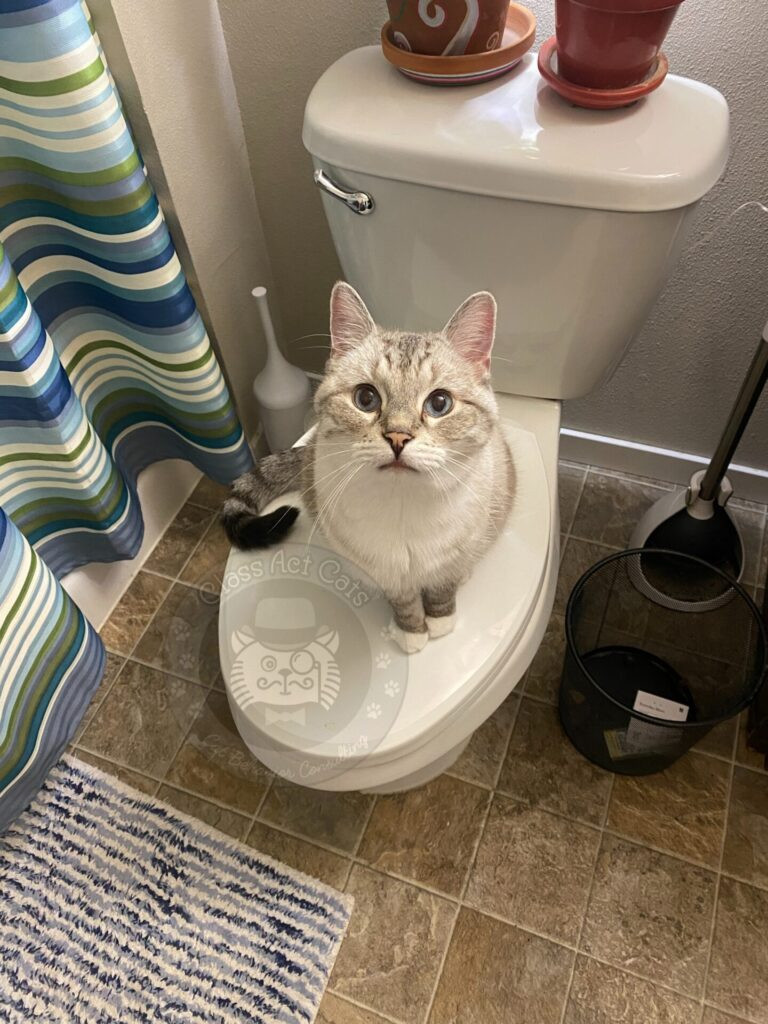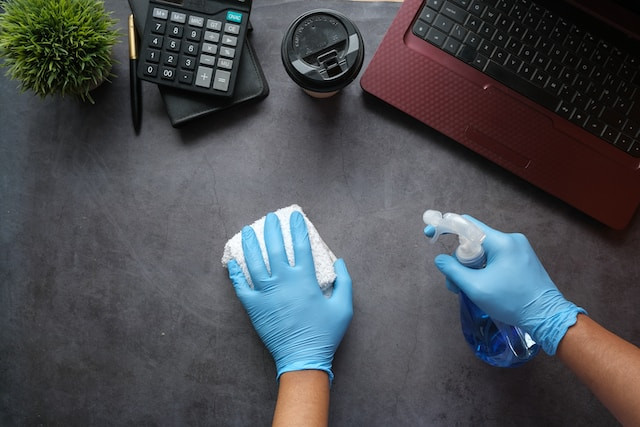As a content creator at solcat.net with expertise in pet care and home cleaning solutions, I understand the frustration of dealing with cat urine accidents outside the litter box. Cat urine odor is notoriously persistent, and improper cleaning can worsen the problem. This guide will delve into the science behind cat urine odor and explain how Cat Urine Enzyme Cleaners are the most effective solution for eliminating smells and stains for good.
Understanding Cat Urine and Why It Smells So Bad
Cat urine’s pungent smell is more than just unpleasant; it’s a complex chemical signature. Before researching pet odors, I used to believe that certain litters could magically eliminate urine odor simply by absorption. Like many cat owners, I tried litters claiming weekly changes were sufficient, only to be overwhelmed by an incredibly offensive smell upon finally changing it. This experience highlighted the limitations of masking odors and the importance of understanding the source.
 Zoloft the cat sits on a closed toilet looking at the camera
Zoloft the cat sits on a closed toilet looking at the camera
The primary culprit behind cat urine’s strong odor is feline, a sulfur-containing amino acid metabolite. As feline degrades, it transforms into compounds called thiols, which are notorious for their strong and unpleasant sulfurous smell. This is why cat urine odor is so distinctive and difficult to ignore.
The Lingering Problem: Uric Acid in Cat Urine
Beyond feline, uric acid is another significant component of cat urine contributing to persistent odors. Uric acid crystals are not water-soluble and can cling to surfaces even after standard cleaning attempts. This means that even if you initially mask the smell, uric acid can reactivate and release odor when exposed to humidity or moisture.
This reactivation is not just a problem for your nose; your cat’s sensitive sense of smell can detect even faint traces of uric acid. If they smell their previous urine mark, it can trigger them to re-mark the same spot, reinforcing the undesirable behavior. Therefore, completely removing uric acid is crucial to break this cycle and prevent repeat offenses.
 A grey kitten stepping out of a litter box.
A grey kitten stepping out of a litter box.
Why Enzyme Cleaners are Essential for Cat Urine
Knowing the complex composition of cat urine clarifies why ordinary household cleaners often fail. General-purpose cleaners, soap, water, or even bleach might mask the surface odor temporarily, but they don’t effectively break down the uric acid and feline components. In fact, using bleach on cat urine is strongly discouraged as it can react with ammonia in urine to create toxic gases.
Cat urine enzyme cleaners are specifically formulated to target and eliminate cat urine odor at its source. These specialized cleaners contain enzymes, which are proteins that act as catalysts to speed up biochemical reactions. In enzyme cleaners, these enzymes are designed to break down the molecules responsible for cat urine odor, including uric acid and the sulfur compounds from feline.
How Enzyme Cleaners Work
Enzyme cleaners work through a process called biodegradation. The enzymes in the cleaner are specifically selected to target the organic compounds in cat urine. They work by:
- Identifying the stain: The enzymes in the cleaner seek out the organic components of cat urine, effectively targeting the stain and odor molecules.
- Breaking down molecules: Once they locate the urine stain, the enzymes begin to break down the complex molecules like uric acid, proteins, and thiols into smaller, odorless components like carbon dioxide and water.
- Eliminating odor and stain: By breaking down these odor-causing components, enzyme cleaners don’t just cover up the smell; they eliminate it completely, along with the stain, when used correctly.
This enzymatic action is far superior to simply masking odors with fragrances, as it tackles the root cause of the problem, ensuring long-term odor removal and preventing re-marking by your cat.
Choosing the Right Cat Urine Enzyme Cleaner
While many products claim to be enzyme cleaners, not all are equally effective. Here’s what to look for when choosing a cat urine enzyme cleaner:
- Specificity: Ensure the product is specifically formulated for cat urine. Some general enzyme cleaners or those designed for dog urine may not be as effective against the unique components of cat urine.
- Enzyme Type: Look for cleaners that mention enzymes targeting uric acid and organic pet stains. Terms like “protease” and “lipase” on the ingredient list indicate enzymes effective against urine components.
- Professional Strength: Opt for professional-strength enzyme cleaners for tougher stains and odors. These typically have a higher concentration of enzymes for more potent cleaning power.
- Reputable Brands: Choose products from reputable brands known for pet-safe and effective cleaning solutions. Customer reviews can also provide valuable insights into product effectiveness.
- Avoid Harsh Chemicals: Select enzyme cleaners that are free from harsh chemicals, bleach, and strong fragrances, which can be irritating to pets and may not be as effective in the long run.
Popular and effective cat urine enzyme cleaner brands often recommended include Rocco & Roxie Stain & Odor Eliminator, Angry Orange Enzyme Pet Odor Eliminator, and Nature’s Miracle Advanced Stain & Odor Remover.
Considerations Beyond Enzyme Cleaners: Oxy Cleaners and Deodorizers
While enzyme cleaners are the primary solution for eliminating uric acid and odor, other types of cleaners can play a supporting role:
- Oxy cleaners: Oxidizing cleaners can help break down stains and may provide additional odor control after enzyme treatment. They work by releasing oxygen to break down stain molecules.
- Pet odor deodorizers: These products can help to neutralize lingering surface odors after enzymatic cleaning, but they should not be used as a substitute for enzyme cleaners.
A recommended approach is to use an enzyme cleaner first to target uric acid and odor at the source, and then follow up with an oxy cleaner or deodorizer for enhanced stain removal and residual odor control, especially on porous surfaces like carpets.
Best Practices for Cleaning Cat Urine with Enzyme Cleaners
Simply spraying an enzyme cleaner and wiping it up is often not enough for effective cat urine removal. Following best practices ensures the enzyme cleaner can work optimally:
General Cleaning Process: Step-by-Step
- Act Quickly: The fresher the stain, the easier it is to treat. Address accidents as soon as possible to prevent urine from penetrating deeper into surfaces.
- Blot, Don’t Rub: Gently blot up as much fresh urine as possible with paper towels or a clean cloth, working from the outside of the stain inward to avoid spreading it.
- Test in a Hidden Area: Before applying any cleaner, test it on an inconspicuous area of the material to check for colorfastness or damage, especially on delicate fabrics or surfaces.
- Saturate the Stain: Apply the cat urine enzyme cleaner generously to completely saturate the stained area, ensuring it reaches all levels of urine penetration. For carpets, this means getting down to the carpet pad if necessary.
- Allow Dwell Time: Let the enzyme cleaner dwell on the stain for the time recommended by the manufacturer, or even longer for old or stubborn stains. This allows the enzymes to fully break down the urine components. Do not rush this step.
- Blot Again: After the dwell time, blot up the cleaner and any remaining urine residue with a clean cloth or paper towels. Avoid rubbing, which can spread the stain or damage fibers.
- Repeat if Necessary: For persistent odors or stains, repeat the application and dwell time process multiple times until the odor and stain are completely gone. Patience and persistence are key.
- Air Dry: Allow the cleaned area to air dry completely. Avoid using heat, as heat can set stains and odors.
- Final Check (Blacklight): For hidden or old stains, use a blacklight in a dark room to locate urine spots, which will fluoresce under UV light. This helps ensure you treat all affected areas.
 A person
A person
Surface-Specific Cleaning Tips
- Laundry (Washable Fabrics, Rugs): For washable items, pre-soak them overnight in cool water with diluted enzyme cleaner before laundering as usual with an enzymatic laundry detergent for best results.
- Furniture and Mattresses: For deep urine penetration in furniture cushions or mattresses, consider using a syringe or upholstery needle to inject enzyme cleaner directly into the affected area. For wooden furniture parts affected by urine, clean with enzyme cleaner and consider wood refinishing if damage is significant. Use waterproof furniture covers and mattress protectors to prevent future damage.
- Carpets: For carpets, after enzyme treatment, use a carpet cleaner (steam cleaner or carpet shampooer) with an enzyme-based carpet cleaning solution to deep clean and extract urine residue.
- Hardwood Floors: For hardwood floors, act quickly to prevent urine from soaking into the wood. Use enzyme cleaner sparingly, applying it and quickly wiping it up to minimize moisture exposure to the wood. Repeat applications may be needed, allowing the wood to dry completely between each. Refinishing may be required for severe cases.
What to Avoid When Cleaning Cat Urine
- Avoid Ammonia-Based Cleaners: Cat urine contains ammonia, and using ammonia-based cleaners can intensify the odor and may even attract cats to re-mark the area.
- Don’t Use Bleach: Bleach is ineffective against uric acid and can react dangerously with ammonia in urine.
- Skip Steam Cleaning Fresh Stains: Heat from steam cleaners can set urine stains and odors, making them harder to remove. Use enzyme cleaners first, and steam clean only after enzyme treatment.
- Avoid Rubbing Stains: Rubbing can spread the stain and damage fibers. Always blot gently.
- Don’t Just Mask the Odor: Fragrance-based air fresheners or masking sprays only cover up the odor temporarily and do not eliminate the underlying uric acid.
Troubleshooting Persistent Cat Urine Odor
If you’ve used a cat urine enzyme cleaner and still detect an odor, consider these troubleshooting steps:
- Check the Enzyme Cleaner: Ensure the product is not expired and is specifically designed for cat urine. Follow the instructions carefully and use a sufficient amount of product.
- Retreat the Area: Repeat the enzyme cleaning process multiple times, ensuring proper saturation and dwell time.
- Consider a Different Enzyme Cleaner: Not all enzyme cleaners are equally effective. Try a different brand or formulation if the first one doesn’t work.
- Professional Cleaning: For deeply embedded odors in carpets or upholstery, consider hiring a professional pet stain and odor removal service. Ensure they use enzyme-based products.
- Rule Out Re-Marking: Make sure your cat is not re-urinating in the same spot. Use a motion-activated camera to monitor the area. Address any underlying litter box issues or behavioral problems contributing to inappropriate urination.
 A cat with a silly face
A cat with a silly face
Conclusion: Enzyme Cleaners – Your Best Tool Against Cat Urine Odor
Cleaning cat urine effectively requires understanding the nature of the odor and using the right tools. Cat urine enzyme cleaners are not just another cleaning product; they are specifically designed to break down the complex organic compounds in cat urine, eliminating odors and stains permanently. By choosing the right enzyme cleaner and following proper cleaning techniques, you can successfully remove cat urine odor from your home and prevent repeat accidents.
While cleaning is essential, remember that addressing the underlying cause of your cat’s inappropriate urination is equally important. Consult with a veterinarian to rule out medical issues and consider a cat behaviorist to address any behavioral factors contributing to litter box avoidance.
Need help understanding why your cat is urinating outside the litter box?
Explore Litter Box Solutions on Solcat.net (This is a placeholder, link to relevant page on solcat.net)

